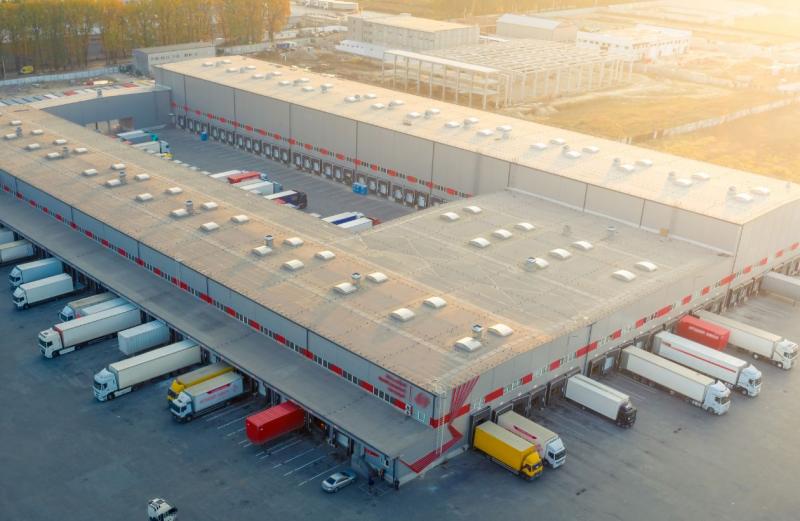Brendan McCurdy, Head of Research and Marketing, sat down with Dave Fazekas, Partner and Head of North America Logistics at Ares, to discuss why industrial real estate remains one of the firm’s highest-conviction investment opportunities—and why it may be an opportune time for advisors to consider investing.
Q&A with Head of North America Logistics
Brendan McCurdy: Dave, let’s dive in. We’ve seen a challenging pricing environment across real estate. Why are you bullish on industrial right now?
Dave Fazekas: We believe valuations bottomed in Q1 2024, and since then, the sector has shown clear signs of recovery with more transaction volumes. Importantly, the pricing reset we saw was driven by capital markets pressure and interest rate increases. We believe fundamentals have remained resilient and leasing has been accelerating. We are seeing tenant demand increase: In June, we saw a surge in leasing activity, with 62 million square feet of logistics space leased—24% higher than June 2024 and 19% above the previous record set in 2022.1 In addition, the Port of Los Angeles handled 892,340 TEUs2 in June—an 8% year-over-year increase and the busiest June in its 117-year history3 —and we have seen that translate into more leasing in the port markets. In short: Demand is growing despite the recent volatility, new supply is slowing, and I believe our platform is well positioned to capture the upside and value for our investors.
Brendan: What’s driving this surge in demand?
Dave: To take a step back, it’s important to acknowledge how resilient GDP and the overall economy have been over the past few years, with a big driver being continued household consumption. With the unemployment rate at 4.3% and wage growth outpacing inflation, consumers continue to have money to spend, and they’re spending it. Meanwhile, companies like Amazon, Walmart and Google are utilizing AI tools to attract shoppers and boost online sales. As a result of these trends, e-commerce is not just holding steady, it is accelerating—and it’s driving the need for logistics space. Every $1 billion in e-commerce sales requires roughly 1.25 million square feet of logistics infrastructure.4 Add to that over $1 trillion in announced U.S. manufacturing investments5 and a broader shift toward regionalized supply chains, and the need for warehouse and distribution space becomes even more pronounced. We also expect current policy—tariffs and the recently passed legislation on accelerated depreciation—to further fuel this momentum.
“Every $1 billion in e-commerce sales requires roughly 1.25 million square feet of logistics infrastructure.”
Brendan: But isn’t supply catching up?
Dave: Not anymore. New construction starts have dropped to 10-year lows. Power constraints are also making new development more difficult as manufacturers and data centers consume large amounts of power. So we’re looking at rising demand, falling supply and increasing competition for prime locations—a compelling setup for investors.
Brendan: How does this translate into returns?
Dave: Embedded rent growth is the key. Over the past five years, base rents across our U.S. industrial platform have increased by ~50%, but much of that growth hasn’t yet been realized due to gradual lease rollovers. That typically drives strong yield and growth potential. Plus, these are triple-net leased properties, offering inflation protection, durable income and built-in resilience.
Brendan: You mentioned scale earlier. Why is that important?
Dave: Scale gives us a strategic edge—on data, sourcing and execution. We’re now the third-largest logistics operator globally, managing over 600 million square feet and $75+ billion6 in logistics assets. That scale provides real-time insights into tenant needs, expansion trends and acquisition opportunities. It’s not just ownership—it’s operational depth. In a world where supply chains are shifting, having both global scale and deep local presence is incredibly powerful. Our localized operations give us a real-time lens into tenant movements and allow us to support their migration across geographies.
“Scale gives us a strategic edge—on data, sourcing and execution.”
Brendan: Final thoughts for advisors?
Dave: When you take a step back and think about the reset of values that we’ve seen, real progress on inflation relative to 2023, interest rates peaking and new construction starts nearing record lows, and you combine that with the resilient demand and institutional flows coming back into the sector, we believe we are looking at a powerful foundation for continued sector growth and continued outperformance. And as interest rates and credit markets evolve and valuations climb, we expect flows across the institutional and wealth channels to further accelerate. I could not be more convicted in the opportunity ahead of us.







